Recent Posts
The Importance of Air Quality Testing After Fire Damage
4/17/2024 (Permalink)
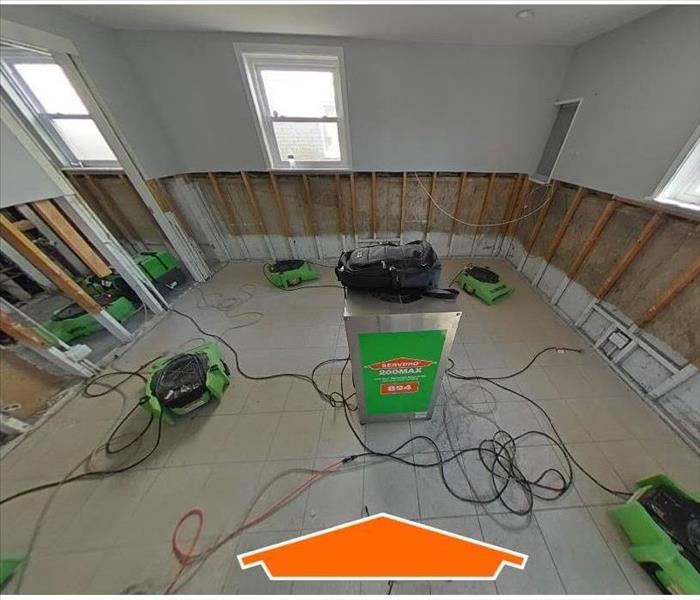 In this blog, we will explore why air quality testing is crucial after fire damage and provide insights into how it is conducted.
In this blog, we will explore why air quality testing is crucial after fire damage and provide insights into how it is conducted.
After experiencing a fire in your home, the importance of thorough fire remediation cannot be overstated. One crucial step in the process is air quality testing, which plays a vital role in ensuring that the indoor environment is safe and free from fire-related contaminants. In this blog, we will explore why air quality testing is crucial after fire damage and provide insights into how it is conducted.
Why is Air Quality Testing Important After Fire Damage?
- Identification of Hidden Contaminants: Fires release a myriad of pollutants into the air, including smoke, soot, and chemical residues. These microscopic particles can remain suspended in the indoor air for an extended period. Air quality testing helps identify the presence and concentration of these hidden contaminants, ensuring a thorough fire damage remediation process.
- Assurance of Safety: Fire-related contaminants can pose risks to occupants, even without considering health issues. Air quality testing provides reassurance that the indoor environment is safe for occupants to return. It ensures that the potential for exposure to harmful particles is minimized, promoting peace of mind.
- Documentation and Insurance Claims: Air quality testing provides valuable documentation of the post-fire condition of the indoor environment. This documentation is important for insurance purposes, helping to substantiate damage claims related to the fire incident.
How is Air Quality Testing After Fire Damage Conducted?
- Initial Assessment: Trained professionals, such as the experts at SERVPRO, will conduct an initial assessment of the fire-damaged area to determine the scope of the testing required. This assessment includes evaluating the extent of fire and smoke damage and identifying potential areas of concern.
- Sampling Strategy: Based on the assessment, the professionals will develop a sampling strategy to collect air samples from specific locations. They may also utilize surface swabs to test for residue and soot particles on various surfaces.
- Air Sampling: Air samples are collected using specialized equipment, such as air pumps and collection devices, designed to capture and collect airborne particles. These samples may be collected in specific rooms, near ventilation systems, or within void spaces.
- Laboratory Analysis: The collected air samples are sent to a qualified laboratory for analysis. Trained technicians analyze the samples to determine the presence and concentration of fire-related contaminants, such as soot, smoke particles, and volatile organic compounds (VOCs).
- Interpretation of Results: Once the laboratory analysis is complete, the professionals will interpret the results and provide a comprehensive report. This report will outline the findings, including the identification of any contaminants and their concentration levels. It will serve as a guide for implementing appropriate fire damage remediation measures.
Air quality testing after fire damage is of utmost importance to ensure the safety and well-being of occupants returning to a fire-affected property. It helps identify hidden contaminants, assures safety, and serves as documentation for insurance claims. Expert professionals, like those at SERVPRO®, conduct thorough assessments, develop sampling strategies, and analyze air samples to provide accurate results. By investing in air quality testing after fire damage, you can have the peace of mind of knowing that your indoor environment is safe and that the fire damage remediation process will be thorough and effective.
Safe Mold Cleaning Products for Your Home
3/13/2024 (Permalink)
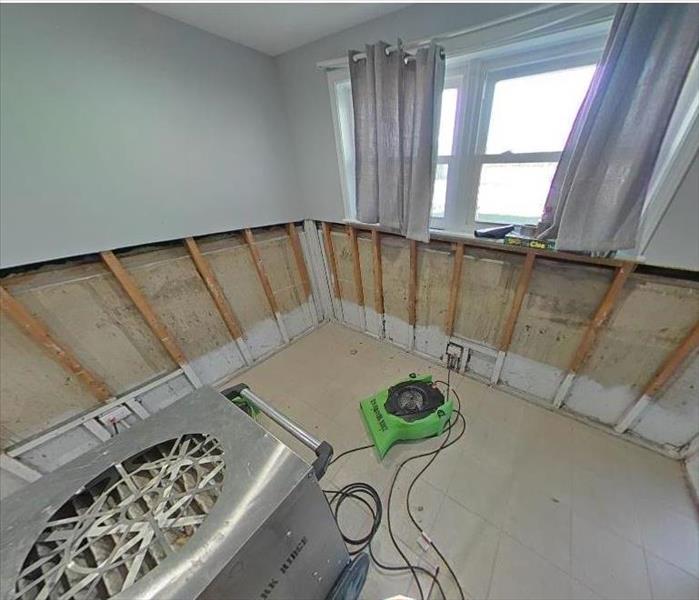 When it comes to cleaning mold damage in your home, it's crucial to use safe and effective products.
When it comes to cleaning mold damage in your home, it's crucial to use safe and effective products.
When it comes to cleaning mold damage in your home, it's crucial to use safe and effective products. Mold growth can be unsightly and can damage your property if left untreated. While there are numerous cleaning products available on the market, it's important to choose those that are OSHA-approved and proven to be effective against mold. In this blog, we will explore a few different safe mold cleaning products and discuss their effectiveness, including the use of bleach as a cleaning solution.
OSHA-Approved Cleaning Products for Mold Removal
- EPA-registered Mold Cleaners: The Environmental Protection Agency (EPA) registers mold cleaners that have been tested and proven to be effective against mold. These cleaners contain specific ingredients that kill mold growth and prevent its reoccurrence. Look for products with EPA registration numbers on the label.
- Commercial Mold Removal Products: There are several commercial mold removal products available specifically formulated for removing mold. These products are usually OSHA-approved and designed to disinfect and remove mold from various surfaces within your home.
- Vinegar: Vinegar is a natural cleaning solution that can be effective against mold. It contains acetic acid, which has antimicrobial properties and can kill certain types of mold. However, it may not be as effective against all types of mold and may not eliminate the spores.
- Hydrogen Peroxide: Hydrogen peroxide is another natural cleaning product that can be used to clean mold. It has strong antimicrobial properties and can effectively kill mold on various surfaces. Make sure to use a 3 percent concentration of hydrogen peroxide for safety.
While these cleaning products are typically safe for use in mold removal, it's important to follow the instructions provided by the manufacturer and take necessary precautions, such as wearing gloves and ensuring proper ventilation.
The Effectiveness of Bleach Against Mold
Bleach is a commonly used household cleaning product, and many people wonder if it is effective against mold. While bleach can kill mold on non-porous surfaces, it may not be as effective on porous materials like wood, drywall, and fabric. Bleach can also change the color of the mold, making it harder to detect during future inspections.
Another drawback of using bleach for mold removal is that it may not completely eliminate the mold spores. The chlorine in bleach evaporates quickly, and once the liquid has dried, there is no continued antimicrobial effect. This means that the mold can potentially grow back if any spores are left behind.
How to Clean Mold Damage Safely
When cleaning mold damage in your home, always follow these safety guidelines:
- Protective Gear: Wear protective gloves, goggles, and a mask to minimize exposure to mold spores.
- Containment: Use plastic sheets or barriers to isolate the affected area and prevent the spread of mold spores.
- Ventilation: Open windows and use fans to improve airflow and ventilation during the cleaning process.
- Follow Instructions: Read and carefully follow the instructions provided by the manufacturer of the cleaning product you are using.
- Seek Professional Help: If you are unsure about cleaning the mold damage or dealing with a large-scale infestation, it's best to seek professional mold remediation services like SERVPRO. They have the expertise and proper equipment to safely and effectively remove the mold.
In conclusion, choosing safe and effective cleaning products is essential when dealing with mold damage. While there are several OSHA-approved products available, it's important to be aware of bleach's limitations and potential risks. By following proper safety guidelines and seeking professional help when needed, you can clean mold damage safely and effectively.
For professional mold remediation services and expert guidance on cleaning mold damage, contact SERVPRO®. They have the necessary expertise and experience to handle mold removal, ensuring your home is restored to a clean and healthy environment.
Remember, a safe and thorough cleaning process is crucial when treating mold damage, ensuring the well-being of you and your home.
Most Common Appliance Leaks That Cause Water Damage
1/16/2024 (Permalink)
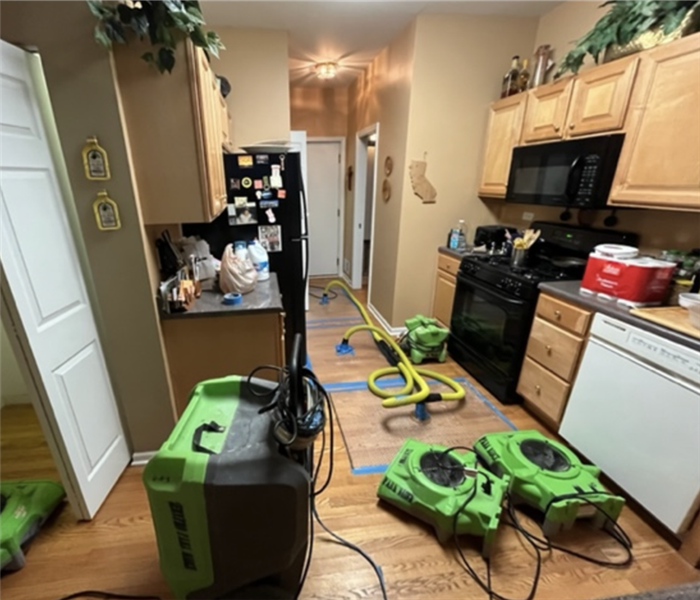 Water damage resulting from appliance leaks is a common issue that homeowners face.
Water damage resulting from appliance leaks is a common issue that homeowners face.
Water damage resulting from appliance leaks is a common issue that homeowners face. Often, these leaks can go unnoticed until significant damage has occurred. Understanding the common sources of appliance leaks is crucial in preventing potential water damage. In this blog, we'll highlight common household appliances prone to leaks that can lead to water damage and how to address them proactively.
1. Refrigerator
Refrigerator leaks commonly stem from malfunctioning ice makers, damaged water supply lines, or clogged defrost drains. Water pooling beneath or around the refrigerator could indicate these issues. Regularly inspect water supply lines for wear or leaks, and clear any blockages in the defrost drain to prevent water backup.
2. Washing Machine
Leaks from washing machines often occur due to damaged hoses, loose connections, or worn-out seals. Check hoses for cracks or bulges and replace them every few years. Ensure proper installation and tight connections to prevent water seepage. Periodically clean the lint filter to prevent clogs that may cause leaks.
3. Dishwasher
Dishwasher leaks commonly arise from damaged door seals, loose or worn-out gaskets, or faulty connections. Inspect the door gasket for any signs of wear or damage and replace it if necessary. Check hose connections and tighten them to prevent water leaks. Regularly clean the dishwasher filter to avoid blockages.
4. Water Heater
Water heater leaks can occur due to corrosion, loose connections, or a faulty pressure relief valve. Inspect the tank for signs of rust or corrosion and promptly address any issues. Regularly test the pressure relief valve and ensure proper functioning. A professional inspection of the water heater annually can help identify potential leaks.
5. Air Conditioning Unit
Condensation from the air conditioning unit can lead to leaks if drain lines become clogged or damaged. Check the drain lines for blockages and clear them regularly to prevent water backup. Ensure proper installation and regular maintenance of the AC unit to avoid condensation-related leaks.
Preventive Measures to Mitigate Appliance Leaks
- Perform routine inspections of appliances and their connections for any signs of wear or damage.
- Replace hoses, gaskets, and seals periodically to maintain their integrity.
- Routinely clean filters and drains to prevent clogs and backups that could lead to leaks.
- Consider professional maintenance and inspections for appliances annually to identify potential issues early.
Addressing appliance leaks promptly can prevent extensive water damage to your home. Regular maintenance, inspections, and proactive measures are key to mitigating the risks associated with common appliance leaks. Remember, if you notice any signs of leaks or water damage, it's crucial to take immediate action to prevent further damage and seek professional help if needed.
At SERVPRO of Park Ridge/ N. Rosemont & S. Des Plaines, we specialize in water damage restoration and mitigation. Contact us for expert assistance in addressing water damage caused by appliance leaks and restoring your home to its pre-damage condition!
Severe Weather Facts in Illinois
1/13/2024 (Permalink)
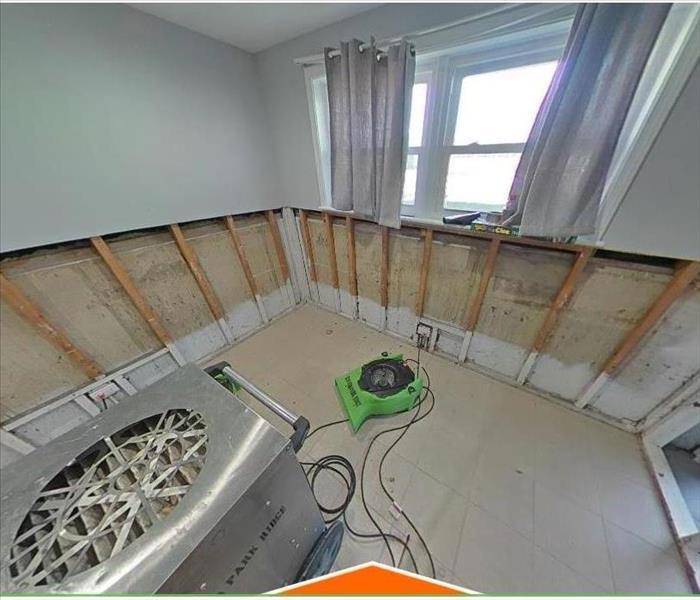 Being aware of Illinois' severe weather risks is the first step toward a safer, more resilient home.
Being aware of Illinois' severe weather risks is the first step toward a safer, more resilient home.
Living in Illinois means being prepared for a range of severe weather conditions that can impact your home and community. In this blog, we'll uncover key severe weather facts in Illinois, empowering you with knowledge to stay safe and resilient.
Thunderstorms are Common
Illinois experiences a high frequency of thunderstorms, especially during the spring and summer months. These storms can bring heavy rainfall, lightning, strong winds, and even tornadoes. Staying informed about weather forecasts and having a plan in place is crucial to navigating these storms safely.
Tornado Alley Presence
Illinois is part of the region known as Tornado Alley, where tornado activity is relatively high. Tornadoes can form quickly, and having a designated safe space in your home, along with a reliable way to receive tornado warnings, is essential for protection.
Winter Storms Bring Snow and Ice
Winter in Illinois can be harsh, with snow and ice storms posing significant challenges. Preparing your home for winter, including insulating pipes, ensuring proper heating, and having an emergency kit, is key to weathering the colder months.
Flood Risk Along Rivers
Several major rivers run through Illinois, increasing the risk of flooding, especially during heavy rainfall or spring thaws. Understanding flood-prone areas, having a flood emergency plan, and considering flood insurance are vital steps for homeowners.
Extreme Heat in Summers
Summers in Illinois can bring prolonged periods of extreme heat. Protect yourself and your family by staying hydrated, using air conditioning, and being mindful of outdoor activities during peak heat hours.
Being aware of Illinois' severe weather facts is the first step toward a safer, more resilient home. Stay tuned to the SERVPRO of Park Ridge/ N. Rosemont & S. Des Plaines blog for additional insights on disaster preparedness, home safety, and expert advice. And remember, if your property faces severe weather-related damage, our SERVPRO® team is here 24/7 to provide professional restoration services!
Why Post Fire Air Quality Testing Is Important
11/13/2023 (Permalink)
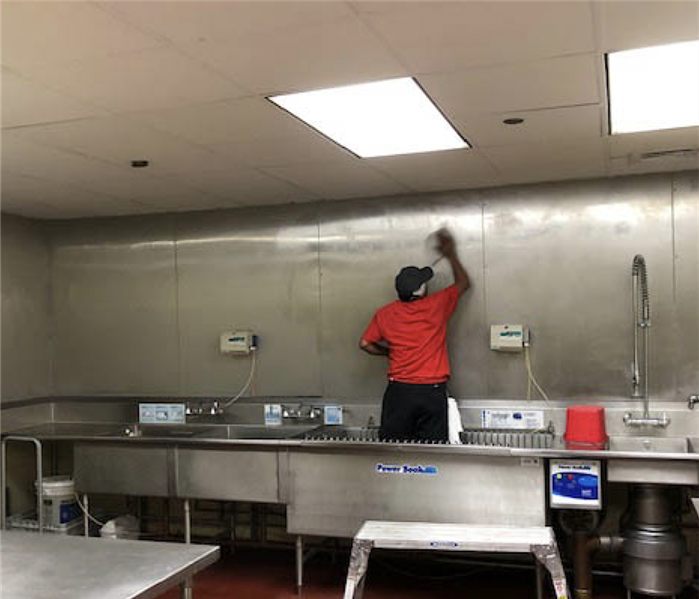 Even after the flames are extinguished, the air quality in your home or business may be compromised by smoke, soot, and ash particles.
Even after the flames are extinguished, the air quality in your home or business may be compromised by smoke, soot, and ash particles.
Fires can be incredibly destructive, leaving behind not only visible damage but also invisible threats to yourself and your property. Even after the flames are extinguished, the air quality in your home or business may be compromised by smoke, soot, and ash particles. In this blog, we'll discuss the importance of post-fire air quality testing and what you need to know to protect your indoor environment and well-being.
Understanding the Need for Post-Fire Air Quality Testing
After a fire incident, the environment inside your property may contain hazardous particles that can affect you and others on your property. This includes:
Smoke Residue
Smoke from a fire produces tiny particles and chemicals that can be harmful to breathe in. These particles can settle on surfaces and in the air, causing respiratory issues and other problems.
Soot and Ash
Soot and ash can contain toxic substances, including heavy metals and carcinogens. They can infiltrate your indoor air, posing risks and further property damage.
Residue in HVAC Systems
Smoke and soot can also infiltrate your HVAC (heating, ventilation, and air conditioning) systems. If not properly cleaned and assessed, these systems can continue to distribute pollutants throughout your property.
Why Post-Fire Air Quality Testing is Essential
Identifying Risks
Post-fire air quality testing helps identify the presence of harmful substances in the indoor air. This knowledge is crucial for understanding potential risks and taking appropriate action.
Assessing the Extent of Contamination
Testing allows professionals to assess the extent of contamination in your property. This information guides the cleanup and restoration process.
Customized Cleanup
Knowing the specific contaminants present allows for a tailored approach to cleanup and restoration, ensuring thorough removal and mitigation.
Insurance Claims
Detailed air quality testing reports can be valuable when filing insurance claims for post-fire restoration. They provide clear evidence of the need for professional cleanup.
What to Expect During Post-Fire Air Quality Testing
A professional restoration company like SERVPRO® will start with a consultation to understand the extent of the fire damage and your concerns. Air samples will be collected from various areas in your property, including areas affected by the fire and areas seemingly unaffected. The samples are sent to a certified laboratory for analysis, where experts will identify the presence of hazardous substances. Based on the analysis, you'll receive a detailed report outlining the findings and recommendations for cleanup and restoration.
Post-fire air quality testing is a crucial step in the recovery process after a fire incident. It provides essential information to protect yourself and others, customize the restoration process, and support insurance claims. If you've experienced a fire in your home or business, don't underestimate the importance of this critical step. Contact SERVPRO for professional post-fire air quality testing and comprehensive restoration services to ensure a safe and healthy indoor environment. Your well-being and peace of mind are our top priorities.
Safe Mold Cleaning Products for Your Home
11/8/2023 (Permalink)
 Maintaining a mold-free home is achievable with safe and effective mold-cleaning products.
Maintaining a mold-free home is achievable with safe and effective mold-cleaning products.
Mold is a common challenge for residences in our area due to varying weather conditions. When it comes to mold cleaning, choosing safe and effective products is essential. In this blog, we'll guide you through selecting the right mold-cleaning products to keep your home mold-free without compromising on safety.
1. Vinegar
Vinegar is a natural and cost-effective option for mold cleaning. Its mild acidity makes it effective in killing mold and preventing its return. Simply mix equal parts white vinegar and water in a spray bottle and apply it to the affected areas. Let it sit for a while, then scrub and rinse.
2. Baking Soda
Baking soda is another versatile and eco-friendly cleaning option. It not only removes mold but also helps to neutralize musty odors. Make a paste with baking soda and water, apply it to the moldy surface, and scrub gently. Rinse thoroughly afterward.
3. Hydrogen Peroxide
Hydrogen peroxide is a safe alternative to chlorine bleach. It can effectively kill mold and mildew on various surfaces. Use a 3% hydrogen peroxide solution, apply it to the mold, and let it sit for 10 minutes. Then, scrub and rinse.
4. Tea Tree Oil
Tea tree oil is a natural antifungal and antibacterial agent. It is an excellent choice for mold prevention. Mix a teaspoon of tea tree oil with a cup of water in a spray bottle, and use it to clean mold-prone areas. It also leaves a pleasant scent behind.
5. Commercial Mold Cleaners
If you prefer ready-made solutions, look for commercial mold cleaners with low or no volatile organic compounds (VOCs). These products are formulated to kill mold effectively while being safer for indoor air quality. Be sure to follow the manufacturer's instructions.
Precautions When Using Mold Cleaning Products
While these cleaning options are generally safe, it's essential to take precautions:
- Ventilation: Ensure proper ventilation when using cleaning products to disperse fumes.
- Protective Gear: Consider wearing gloves and a mask to avoid direct contact with mold and cleaning solutions.
- Testing: Test the cleaning product on a small, inconspicuous area first to ensure it won't damage the material.
- Consult Professionals: For extensive mold problems, hidden mold, or if you're unsure, consult mold remediation professionals like SERVPRO® of Park Ridge/N. Rosemont & S. Des Plaines for expert guidance.
Maintaining a mold-free home in Des Plaines, IL, is achievable with safe and effective mold-cleaning products. Whether you choose natural options like vinegar and baking soda or commercial cleaners, regular cleaning and preventive measures are key to keeping mold at bay. Remember, for larger or challenging mold issues, don't hesitate to reach out to SERVPRO® of Park Ridge/N. Rosemont & S. Des Plaines for expert assistance. We're here to help you maintain a healthy and mold-free home environment.
Caring for Your Home: Preventing Water Damage from Appliances
10/8/2023 (Permalink)
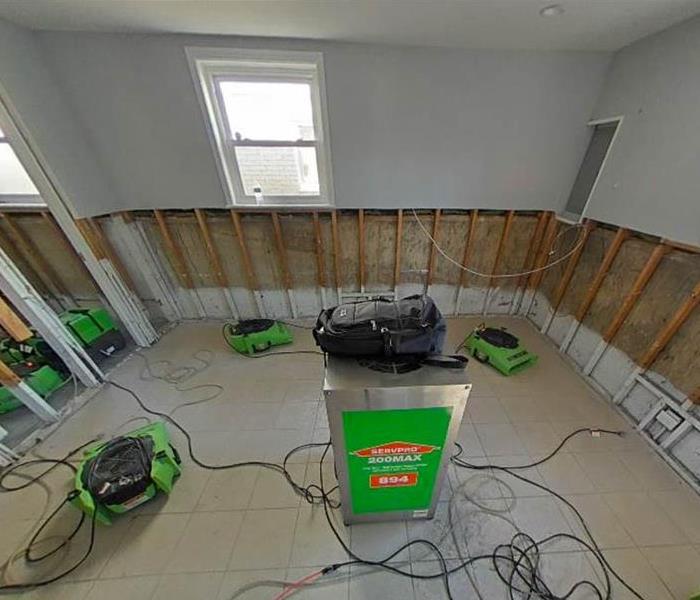 Water damage from appliances can be a disruptive and costly issue in your home.
Water damage from appliances can be a disruptive and costly issue in your home.
While appliances like washing machines and dishwashers make our lives more convenient, they can also pose a hidden risk – water damage. Here in Illinois, water damage from appliances is a common issue, and it often catches homeowners off guard. In this blog, we'll delve into the potential sources of water damage from appliances and provide essential tips to help you prevent and address these issues effectively.
Understanding the Risk: Where Does It Come From?
Washing Machines: These workhorses of the laundry room can sometimes malfunction, causing water to leak from hoses, pumps, or even the machine itself. Over time, wear and tear can lead to cracks or loose connections.
Dishwashers: Leaks from dishwashers often occur at the hose connections, door gaskets, or pump seals. A malfunctioning float switch can also result in overfilling and subsequent water damage.
Refrigerators: If your fridge has a water dispenser or ice maker, it's connected to your home's water supply. A damaged or loose water line can lead to slow leaks, which can go unnoticed for some time.
Preventing Appliance-Related Water Damage
Regular Maintenance: Inspect hoses, connections, and seals on your appliances regularly. Replace any damaged or aging components promptly. Consider upgrading to steel-braided hoses, which are more durable than standard rubber ones.
Install Water Leak Detectors: These affordable devices can alert you to water leaks, even when you're away from home. Some can automatically shut off the water supply if a leak is detected.
Check for Signs: Be vigilant for signs of water damage, such as water spots, dampness, or musty odors around appliances. Address any issues promptly to prevent further damage.
What to Do When Water Damage Occurs
Turn Off the Water: If you notice a water leak from an appliance, shut off the water supply to that appliance immediately to prevent further damage.
Call SERVPRO: Our skilled professionals in Illinois are experts in water damage restoration. We'll assess the extent of the damage, extract excess water, and thoroughly dry and dehumidify the affected area.
Content Restoration: We also specialize in content restoration. If your belongings have been damaged by water, we can help restore them to their pre-damage condition.
Water damage from appliances can be a disruptive and costly issue in your Illinois home. By staying vigilant, performing regular maintenance, and taking swift action when water damage occurs, you can protect your property and keep your home safe and dry. If you ever find yourself facing water damage from appliances or any other source, don't hesitate to reach out to SERVPRO of Park Ridge/N. Rosemont & S. Des Plaines. We're here to help Illinois residents restore their properties to their pre-damage condition quickly and efficiently.
Flood Barriers and Sandbags: Effective Techniques for Flood Defense
9/12/2023 (Permalink)
Floods are among the most damaging natural disasters, causing widespread destruction and loss of life. Floodwaters can rise quickly, and without effective protection measures, homes, businesses, and infrastructure are vulnerable to significant damage. Flood barriers and sandbags are two effective techniques for flood defense. In this blog post, we will discuss these techniques and how they can help mitigate the damage caused by floods.
Flood Barriers
Flood barriers are physical structures designed to prevent floodwaters from entering an area. They come in various forms, including permanent structures and temporary ones that can be erected quickly in case of an emergency.
Permanent Flood Barriers
Permanent flood barriers are designed for areas that are at high risk of flooding. These structures are robust and can withstand extreme forces generated by floodwaters.
Concrete walls, earth embankments, and steel barriers are some of the common types of permanent flood barriers. They require significant planning, investment, and construction time to ensure they are effective in protecting the area from floods.
Temporary Flood Barriers
Temporary flood barriers are designed as a quick response to an imminent flood threat. They are lightweight, portable, and easy to assemble, making them ideal for quick deployment.
Temporary flood barriers are made of materials such as sandbags, inflatable tubes, and portable barriers made of plastic or aluminum. They can be built in a matter of hours and can be removed quickly when the threat of flooding has passed.
Sandbags
Sandbags are a traditional and effective way of protecting buildings and infrastructure from floodwaters. Sandbags act as a barrier, absorbing water and creating a dam to prevent floodwaters from entering a building or an area.
Here are some tips for using sandbags effectively:
- Fill up sandbags with a mixture of sand and soil. This will help the bags mold themselves to the shape of the area you wish to protect, making them more effective.
- Overlap sandbags: When stacking bags, make sure to overlap them, like brickwork. This creates a more effective barrier.
- Ensure full contact: Once the sandbags are placed in position, make sure they are tightly packed and in full contact with each other.
- Use plastic sheeting: Placing a layer of plastic sheeting between your sandbags and the building or area you are protecting will help prevent seepage along the base of the bags.
Flood barriers and sandbags are both effective techniques for flood defense. Permanent barriers may be appropriate for areas at high risk of flooding, while temporary barriers and sandbags can be deployed quickly and effectively during an emergency.
It's essential to note that flood barriers, whether permanent or temporary, may not provide complete protection from floodwaters. During severe flooding, water may still enter from underneath or above the barrier. Therefore, the best approach is to use a combination of techniques to mitigate the damage caused by floods. Stay informed, stay prepared, and be ready to take action when needed to protect yourself, your family, and your property.
The Role of Business Interruption Insurance: Protecting Your Business in Times of Crisis
8/20/2023 (Permalink)
Business interruption insurance, also known as business income insurance, is a type of coverage that plays a crucial role in helping businesses recover from unexpected disruptions. Whether it's a natural disaster, a fire, a cyber attack, or a global pandemic like COVID-19, unforeseen events can significantly impact a company's operations and revenue. In this blog post, we will explore the role of business interruption insurance and why it is a vital component of business risk management.
Understanding Business Interruption Insurance
Business interruption insurance provides financial protection by compensating businesses for lost income and additional expenses incurred during a period of interruption or forced closure. It typically covers the following:
Lost Profits: Business interruption insurance helps replace the income lost during the interruption period, allowing businesses to continue paying bills, salaries, and other ongoing expenses.
Extra Expenses: In some cases, businesses may incur extra expenses to minimize the impact of the interruption or to speed up the recovery process. Business interruption insurance can help cover these additional costs, such as temporary relocation expenses or the purchase of necessary equipment.
Extended Closure: If a business is forced to close temporarily due to a covered event, business interruption insurance can provide coverage for the extended period of closure, giving the business time to recover and rebuild.
Key Benefits of Business Interruption Insurance
Having business interruption insurance in place can provide several key benefits to your business:
Income Protection: One of the most significant benefits of business interruption insurance is that it helps replace lost income during a period of interruption. This allows businesses to keep their cash flow steady and meet financial obligations, such as loan repayments and utility bills.
Continuity of Operations: By providing coverage for the necessary expenses, businesses can continue operating even in challenging times. This can include setting up temporary locations, hiring additional staff, or purchasing new equipment to minimize the impact and maintain continuity.
Peace of Mind: Knowing that your business is protected against unexpected events provides peace of mind. Business owners can focus on recovery and rebuilding without the added worry of the financial strain caused by a prolonged interruption.
Determining Coverage and Policy Limits
When considering business interruption insurance, it's essential to assess potential risks and calculate adequate coverage and policy limits. Factors to consider include:
Historical Revenue: Analyze your previous year's revenue to estimate the income you would need to replace in the event of an interruption.
Recovery Period: Estimate how long it would take for your business to fully recover and return to normal operations. Consider potential delays and the time it would take to rebuild clientele.
Additional Expenses: Assess potential additional expenses you might incur during a period of crisis or interruption, such as relocation, increased marketing efforts, or temporary staffing.
Insurable Events: Identify the types of risks specific to your business and verify that they are covered by the policy. Review exclusions and limitations, and seek clarification from your insurance provider if needed.
Business interruption insurance is a critical component of a comprehensive risk management strategy for any business. Its role extends beyond simply replacing lost income; it provides financial stability and peace of mind during times of crisis. By understanding the coverage options, calculating adequate policy limits, and working closely with your insurance advisor, you can protect your business from the potentially devastating financial impact of unforeseen disruptions. Remember, the right insurance coverage can be the safeguard that keeps your business running, ensuring a swift recovery and a bright future ahead.
Help! My Dishwasher is Leaking
7/27/2023 (Permalink)
A leaking dishwasher can be a frustrating and potentially damaging problem in your kitchen. Whether you notice a small puddle or a steady stream of water, addressing the issue promptly is crucial to prevent further damage to your flooring and cabinets. In this blog post, we will guide you through the steps to take when your dishwasher starts leaking, helping you resolve the issue and restore the functionality of your appliance.
Shut Off the Power and Water
As soon as you notice the dishwasher leaking, turn off the power supply to the appliance. Locate the circuit breaker for your dishwasher and switch it off to eliminate the risk of electrical shock. Next, locate the water supply valve under the kitchen sink or near the dishwasher and shut it off to stop the water flow.
Inspect for Obvious Causes
Before proceeding with further troubleshooting, visually inspect the dishwasher for any obvious causes of the leak. Check the door gasket or seal for tears, cracks, or misalignment. Ensure that the dishwasher door is closing properly and that no objects or debris obstruct the door's complete closure. Additionally, examine the dishwasher's hoses and connections for any signs of leakage or disconnection.
Clean and Unclog the Drain
A clogged drain can cause water to back up and leak from your dishwasher. Remove the bottom rack and inspect the drain area for any food particles, debris, or hard water deposits. Clear away any obstructions using a brush or toothpick and rinse the area with warm water. This simple step can often resolve minor drainage issues.
Check the Float Switch and Float Assembly
The float switch and float assembly are safety mechanisms that prevent overfilling in the dishwasher. Inspect these components for any blockages or malfunctions. Gently move the float up and down to ensure it moves freely and is not stuck in the raised position. If the float switch is faulty, it may need to be replaced by a professional.
Examine the Dishwasher's Seals and Gaskets
The door seal and gaskets play a crucial role in preventing water from leaking out of the dishwasher. Inspect these components for any signs of damage, wear, or debris accumulation. Clean the seals and gaskets using a mild detergent and warm water, removing any food particles or residue that may interfere with a proper seal.
Test for Leakage
After performing the above steps, turn the water supply back on and run a short cycle on your dishwasher while closely monitoring for any signs of leakage. Use a flashlight to inspect the areas around the door, hoses, and connections. If the leak persists, it may be necessary to call a professional dishwasher repair service to diagnose and resolve the issue.
Contact a Professional Repair Service
If your troubleshooting efforts do not resolve the leakage problem, it's advisable to contact a professional dishwasher repair service. Trained technicians have the expertise to diagnose complex issues and safely repair or replace faulty components. They can also provide guidance on whether it's more cost-effective to repair the dishwasher or consider a replacement.
Dealing with a leaking dishwasher can be a hassle, but by following these steps, you can effectively address the issue and prevent further water damage in your kitchen. Remember to prioritize safety by shutting off the power and water supply before inspecting and troubleshooting the appliance. If the leak persists or you're unsure about performing repairs yourself, it's best to seek the assistance of a professional dishwasher repair service. With their expertise, your dishwasher will be back in working order, and you can enjoy clean and dry dishes once again.
 In this blog, we will explore why air quality testing is crucial after fire damage and provide insights into how it is conducted.
In this blog, we will explore why air quality testing is crucial after fire damage and provide insights into how it is conducted.



 24/7 Emergency Service
24/7 Emergency Service





